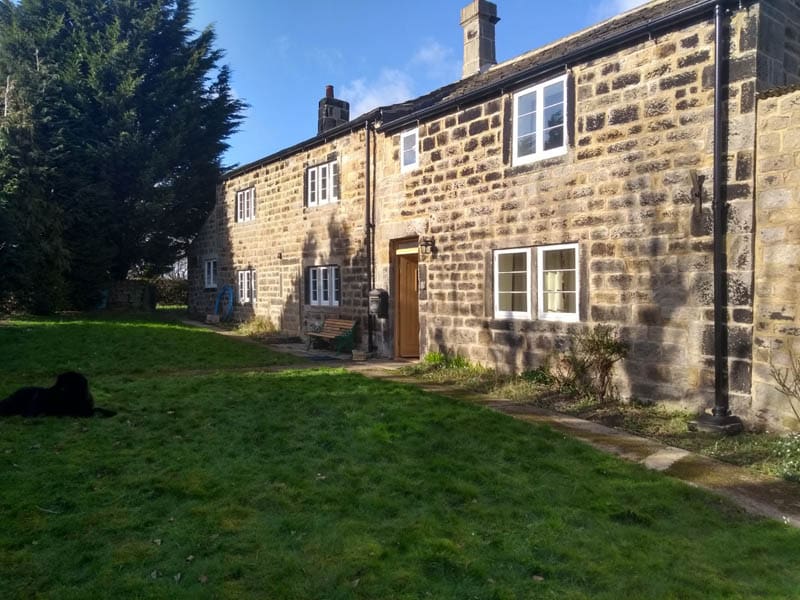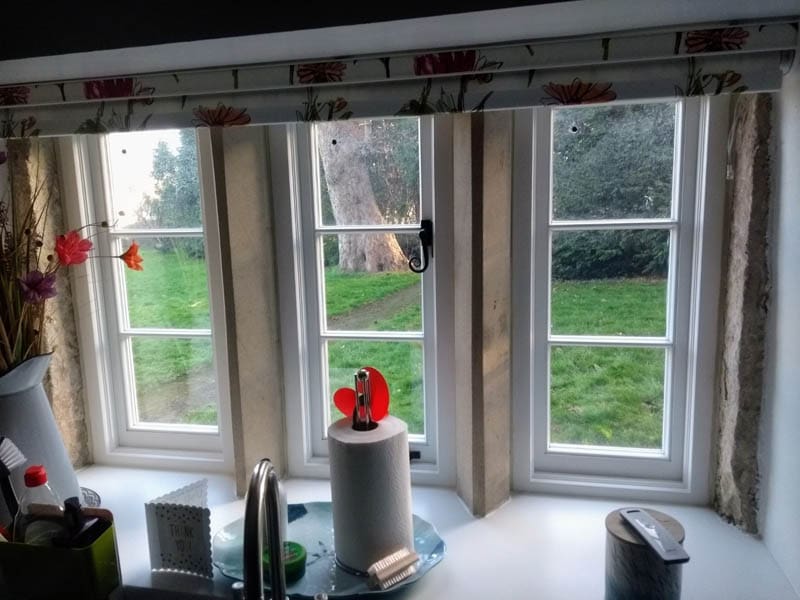
Do You Need Planning Permission for Windows in a Conservation Area?
Historic buildings may be beautiful, but they aren’t the best at keeping the warmth in. If you own a home […]
Historic buildings may be beautiful, but they aren’t the best at keeping the warmth in. If you own a home in a conservation area, you’re probably searching for a way to enjoy modern comfort levels that passes planning permission. Windows are a great place to start!
One effective solution is vacuum glazing, which offers energy efficiency while preserving the look of traditional windows.
This guide covers everything you need to know about upgrading inefficient windows in conservation areas, including planning requirements and why vacuum glazing is often the ideal choice.
Key Takeaways
- Planning Permission: Generally required for any window changes in conservation areas that alter the building’s appearance or structure.
- Like-for-Like Exemptions: Vacuum glazing can sometimes be installed without planning permission if it matches the original look and dimensions, but always confirm with your council.
- Vacuum Glazing as the Best Solution: Vacuum glazing, such as LandVac, is thin (8.3mm), preserves historic aesthetics, and improves insulation by up to 75% over single glazing, making it an ideal choice.
- Historic England Approval: Vacuum glazing is supported by Historic England as an energy-efficient option that meets conservation standards.
- Article 4 Directions: Additional restrictions may apply, often requiring permission for even minor changes, especially if they impact the building’s character.
What Is a Conservation Area and Why Is It Important?
Imagine the Peak District without its iconic stone cottages, historic dry-stone walls, and winding rural paths. Sleek glass buildings stand where centuries-old limestone houses once held stories of the past. Hillsides, once dotted with sheep, now bear clusters of new builds and car parks, gradually erasing the area’s rural charm. This scene is a glimpse of what could happen if conservation areas didn’t exist to protect the unique character of places like the Peak District.
What is a Conservation Area?
A conservation area is a specially designated region with significant architectural or historic interest, deemed valuable enough to be preserved or enhanced. Local councils across the UK establish conservation areas to protect the unique character of neighbourhoods, villages, and landscapes. These areas might include clusters of historic buildings, parks, open spaces, or entire street layouts, all contributing to a distinctive charm and historical continuity.
Why Are Conservation Areas Important?
Conservation areas are vital for safeguarding the UK’s cultural heritage, protecting the visual and architectural character of communities and landscapes. These protections not only maintain the look and feel of towns and cities but also enhance property values, promote community pride, and contribute to sustainable development. Key benefits include:
- Architectural and Historical Preservation: Conservation areas protect buildings and structures that represent important architectural styles and historical periods, preserving the unique story of each place.
- Enhanced Community Identity: By maintaining a cohesive aesthetic, conservation areas foster a strong sense of place and continuity for residents and visitors alike, encouraging community pride and heritage appreciation.
- Environmental and Economic Impact: Conserving heritage buildings is more sustainable than demolishing and rebuilding, as it reduces waste and energy usage. Additionally, well-preserved areas often attract tourism, benefiting local economies and businesses.
When Is Planning Permission Required in Conservation Areas?
In conservation areas, planning permission is often needed for window replacements that affect the building’s character. Here are some common situations:
- Changing Window Style or Material: Altering the appearance, such as switching from timber to uPVC, generally requires permission. Conservation areas aim to keep a consistent historical look, so even small changes can have an impact.
- Altering Size or Shape of Windows: Expanding or reducing window openings or creating new ones counts as structural alteration. This usually requires permission, especially for street-facing windows that shape the area’s visual identity.
- Adding or Modifying Bay Windows: Installing new bay windows or making significant changes to existing ones typically requires permission. Bay windows are considered part of the structure and can affect the appearance.
Can You Have Double Glazing in Conservation Areas?
Yes, but standard double glazing is often discouraged due to its bulkier appearance, which may not suit conservation standards.
Here are the more commonly acceptable options:
- Slim Double Glazing: While slim-profile double glazing is sometimes permitted, it has several drawbacks:
- Lower Efficiency: It typically has a higher U-value than vacuum glazing, meaning it doesn’t insulate as well.
- Potential for Unit Failure: Slim double-glazed units can be prone to seal failure over time, leading to condensation between the panes and reduced performance.
- Secondary Glazing: For windows that must retain the original glass, secondary glazing can add insulation by placing an extra pane on the interior. However, it doesn’t achieve the seamless, single-pane look that vacuum glazing offers.
- Vacuum Glazing : Vacuum glazing is the ideal solution for conservation areas. At only 8.3mm thick, it closely resembles single glazing in appearance, avoids double reflections, and offers high thermal efficiency. This makes it easier to gain planning approval, as it preserves the original look while enhancing energy performance.
Do Like-for-Like Window Replacements Need Planning Permission?
Like-for-like replacements (where the new windows match the original in design, material, and dimensions) are often exempt from planning permission. However, even with this dispensation, it’s important to check with your council.
Vacuum glazing appears visually similar to single glazing, making it a viable option for full like-for-like replacement or retrofitting into existing frames. This is becoming a popular alternative with planning officers as it does not show double reflections like most modern glazing.
Benefits of using vacuum glazing in like-for-like replacements:
- Enhanced insulation: Vacuum glazing adds energy efficiency without changing appearance.
- Historic preservation: It maintains the building’s character while improving comfort.
Why Is Vacuum Glazing Recommended by Historic England?
Historic England’s Adapting Historic Buildings for Energy and Carbon Efficiency guidance recommends low-impact, energy-efficient upgrades that suit heritage properties. Key insights include:
- Slim-Profile and Vacuum Glazing: Historic England endorses vacuum glazing as it maintains slim sightlines essential to preserving the look of heritage windows. Vacuum glazing also provides thermal efficiency comparable to double glazing, making it ideal for conservation areas where maintaining appearance is crucial.
- Prioritising Draught-Proofing: The guidance suggests starting with draught-proofing as it’s a low-impact way to reduce heat loss. However, for enhanced insulation, vacuum glazing is encouraged because it doesn’t compromise the window’s look.
- Aligning with Net-Zero Goals: Historic England supports sustainable upgrades that align with the UK’s net-zero carbon goals. Using vacuum glazing reduces energy consumption and helps historic buildings contribute to environmental targets without altering their visual identity.
What Is an Article 4 Direction and How Does It Affect Window Replacement?
An Article 4 Direction limits certain building changes, especially in conservation areas, to protect the area’s unique look. This means you might need planning permission even for small changes, like swapping single glazing for vacuum glazing.
When Is It Appropriate to Use an Article 4 Direction?
The National Planning Policy Framework advises that Article 4 Directions should be:
- Targeted and Measured: Applied only when there is strong evidence to support it, covering the smallest necessary area.
- Aimed at Avoiding Harm: In non-residential to residential conversions, it should only apply where there’s a risk of unacceptable impacts.
- Limited to Protect Local Amenity: It’s used to protect local character and well-being, especially in areas of unique heritage significance.
If your property is affected by an Article 4 Direction, confirm details with your council, as the rules vary and may restrict even like-for-like replacements.
Upgrading Inefficient Windows in Conservation Areas
For homeowners in conservation areas, upgrading inefficient windows can be challenging. Here are two main options, each suited to different needs and conditions of the existing windows:
Option 1: Full Replacement with by a Specialist
If your windows are in poor condition, a full replacement by a heritage sensitive window manufacturer would be ideal.
Benefits:
- Improves Efficiency Beyond the Glass: A new frame can seal out drafts, enhancing overall thermal performance—not just the glazing.
- Long-Term Durability: Quality timber replacements are designed to last and typically require less maintenance over time.
- Expert Craftsmanship: Specialist joiners experienced in heritage properties understand conservation needs and can often assist with planning permissions.
Replacement windows with Vacuum Glass Case Study:

At Land End Farm in Leeds, owners Rachel and Tom needed a window upgrade that balanced modern comfort with the farmhouse’s historic charm. Being in a conservation area, they were keenly aware that any new windows would need to meet strict guidelines to preserve the property’s look.
They found a perfect solution: custom timber window replacements fitted with LandVac vacuum glazing. This approach allowed them to achieve the energy efficiency they wanted, without compromising the traditional aesthetics of the farmhouse. The slim 8.3mm LandVac glazing closely resembles single glazing, maintaining the original sightlines and look, but with significant improvements in insulation, ideal for conservation area requirements.
Thanks to the combination of high-performance vacuum glass and Gowercroft’s heritage-sensitive timber frames , Rachel and Tom successfully enhanced their home’s warmth and comfort. They achieved all this while respecting the historical character of their property, satisfying both their personal needs and conservation authority standards. This project is a great example of how vacuum glazing can be integrated into sensitive window replacements, offering a win-win for both heritage preservation and modern living. For the full case study, click here.
Option 2: Retrofit Vacuum Glass into Existing Frames
If your existing frames are in good shape, retrofitting vacuum glass, like LandVac, into the original frames can improve insulation without major changes. Vacuum glazing retains the slim profile similar to single glazing but offers modern thermal benefits, making it a popular choice for conservation areas.
Benefits:
- Preserves Original Frames: This option retains the historical character of your property by keeping the existing frames.
- Efficient Insulation: Vacuum glazing can reduce heat loss by up to 75% compared to single glazing, improving energy efficiency and reducing heating costs.
- Cost-Effective: Retrofitting vacuum glazing can be (though is not always) more affordable than a complete window replacement.
Retrofitting windows with Vacuum Glazing Case Study:

In Wimbledon, a homeowner with a Victorian property wanted to improve their sash windows’ energy efficiency but didn’t want to alter the traditional look of the building. Located in a conservation area, the property required a solution that could enhance thermal insulation without changing the window frames or triggering a need for planning approval.
Instead of a full replacement, they opted for a retrofit of their existing sash windows using LandVac vacuum glazing.
This approach was not only more cost-effective than replacing the windows but also aligned with conservation guidelines, as it preserved the original frames and appearance. The vacuum glazing retrofit allowed the homeowner to enjoy the benefits of modern thermal efficiency while fully respecting the property’s heritage.
For a deeper look at how this project unfolded, check out the full case study here.
Case Study 2: Like-for-Like Window Replacement with Vacuum Glazing
In a Georgian conservation area, a property owner replaced deteriorated timber windows with identical timber frames fitted with vacuum glazing. The council confirmed that planning permission wasn’t required since the replacements preserved the original look. The vacuum glazing provided improved insulation without impacting the heritage appearance.
By following these guidelines and consulting your council, you can confidently approach window upgrades in conservation areas. Modern solutions like vacuum glazing allow you to improve your home’s energy performance while respecting its historical charm.
Ready to make your heritage windows more energy-efficient without compromising their character?
Our team is here to help with all the information you need to ensure your upgrade meets both your comfort and preservation goals.
Click here to enquire and start your journey towards warmer, more efficient heritage windows today!